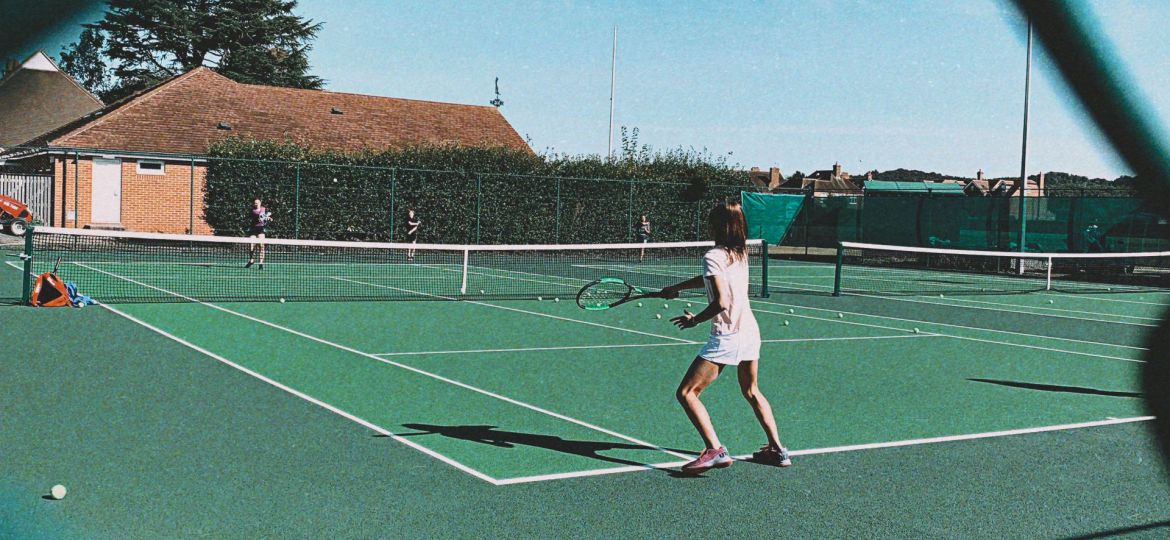
I stumbled upon tennis quite serendipitously. My mother wanted her daughter to be the perfect all-rounder, and sports could not be left out of this grand design of parenting. I was taken to table tennis, gymnastics, and swimming classes, until I finally found my home in tennis for reasons still unknown. As I started settling into tennis and loving the sport, I discovered that tennis is not only about having the privilege to buy a racquet and specialised tennis shoes and access a tennis court. It is also about how one performs and expresses oneself, requiring players to follow a particular aesthetic that enforces gender binaries.
It begins with the outfit. While it has become acceptable for female tennis players to wear shorts, there is an implicit expectation that they wear a tennis skirt or a tennis dress when playing in tournaments and other formal arenas where they perform competitively. It is not just our skills that are put on display but also our bodies, as women’s tennis clothing is usually form-fitting. Tennis dress codes come from a long history of privilege and exclusion associated with private tennis clubs. For example, the Wimbledon Championships, which is hosted at the All England Club and is famous for its prestige and elitism, implement strict rules for clothing and equipment for players, which has set the bar for professional and amateur tennis, as far as dressing etiquette is concerned. Hence, to play tennis, one is required to present as either feminine or masculine, reinforcing the gender binary. There is no space made for players identifying as trans or other genders. While there are global LGBTQIA+ organisations for amateur players, such as the Gay and Lesbian Tennis Alliance (GLTA) which hosts tennis tournaments and events for queer and trans folks and allies, including the ‘Glam Slam’ at the Australian Open, professional tennis continues to be woefully exclusionary.
The preoccupation with gendered appearances and expressions became apparent as I began to train harder, hoping to play competitive tennis. A well-meaning friend of my mother advised her that I should play a more ‘feminine’ sport such as badminton or gymnastics. Aren’t you worried that your daughter will develop muscles and look more masculine? My mother scoffed at that comment, but I ended up internalising it. Despite my best intentions, my struggle with body-image issues has been a long and ongoing battle, and when I feel at my lowest, I sometimes blame my years of playing tennis for not looking good in certain clothes that are made for skinnier bodies. It also doesn’t help when one comes across articles like this Vogue article that builds a specific aesthetic for female tennis players, often conforming to the gender binary. In a 2015 interview with Ben Rothenburg, Serena Williams spoke about her struggle with her body image, which negatively affected how she trained. Other professional female athletes also discussed how they compromise between “power” (building muscles) and being feminine. Female athletes often find their appearance under scrutiny and feel the pressure to look attractive to the male gaze and spectatorship.
It is only in retrospect that I realise how gendered and sexualised my body became on the tennis court. As a child or a teenager, I did not have the language to express my discomfort with wearing certain outfits or being stared at by people walking by the tennis court. I registered the gendered facets of my experiences on the tennis court much later – the small number of girls and women in my tennis club, my female friends who stopped playing once they reached puberty, and the way my coach told me to only play with the boys if I wanted to improve my game, implying that boys were better at tennis than girls. At home, it became unacceptable to continue playing once I reached the age of fifteen. The reason my parents gave me was that I needed to focus on my studies, but the truth was anxiety. There was anxiety regarding the fact that my co-players were predominantly male, and that in my small town, I would develop a reputation as a ‘loose’ girl – someone who hangs out with boys all the time. There was further anxiety about the sexualisation of my adolescent body as I told my parents about being whistled at or being called ‘Sania Mirza’ or ‘Maria Sharapova’ by passers-by.
However, throughout my years of playing tennis, the court also became a space of camaraderie and friendship, of discovering myself. It was a joyful space where we learned to be patient, to compete healthily, to resolve disputes peacefully and just be playful. I also learned to be in touch with my body, mind, and spirit, as playing competitively demanded holistic development. Therefore, as my parents tried to prohibit me from training, I protested and rebelled so that I could continue to train and play competitively, until the time that I decided for myself that academics took precedence in my desire to pursue a career in research.
Memory may have dulled the sharp edges, but somewhere between the gendered and sexualised dimensions of the sport, some of my happiest moments during childhood and adolescence were spent on the tennis court.
Cover Image: Photo by Toa Heftiba on Unsplash